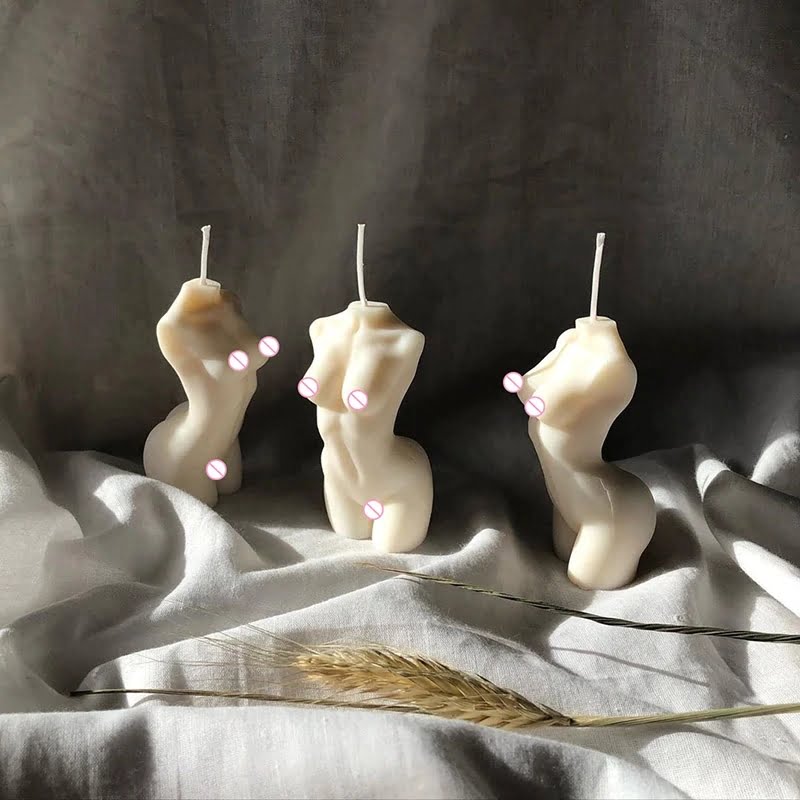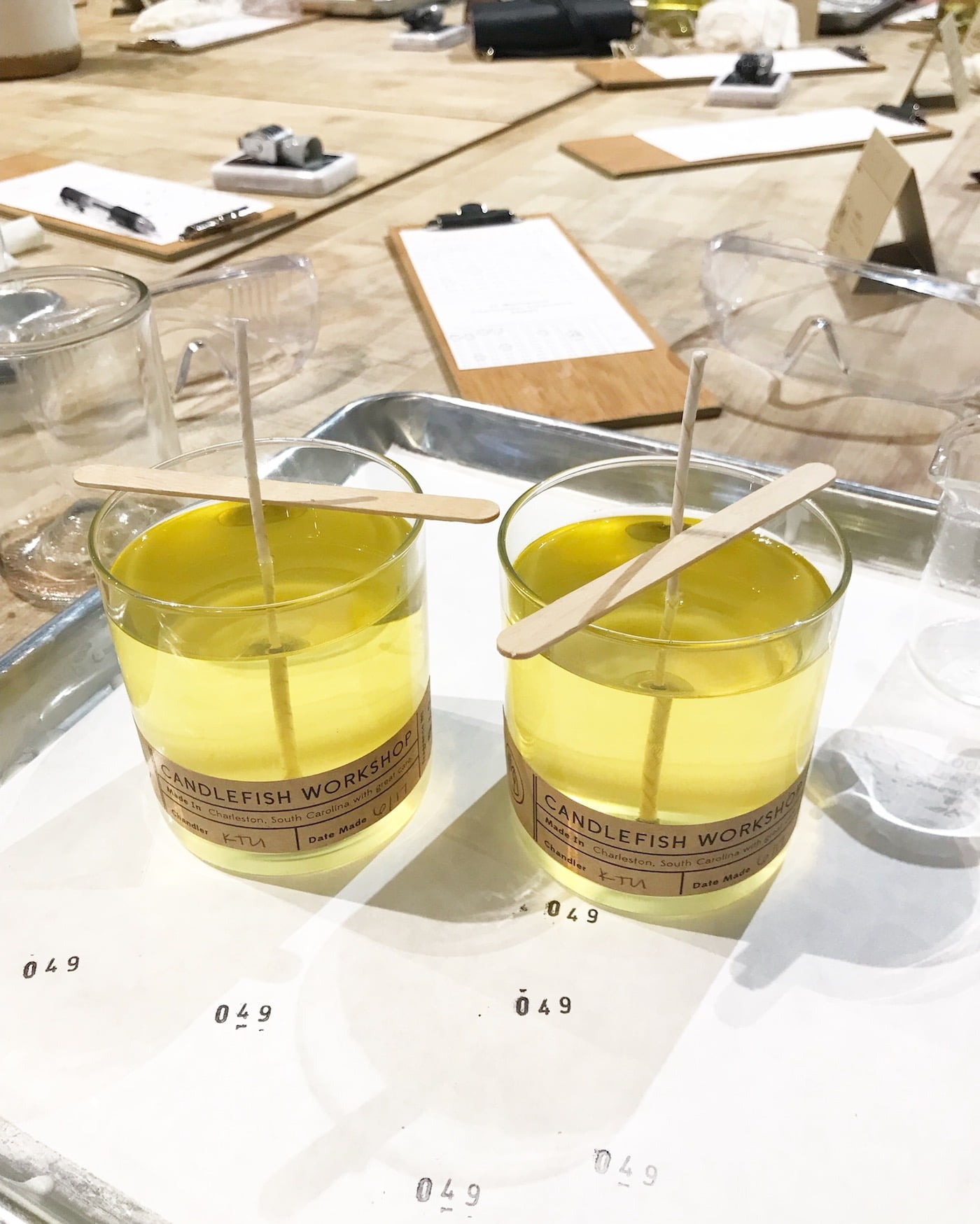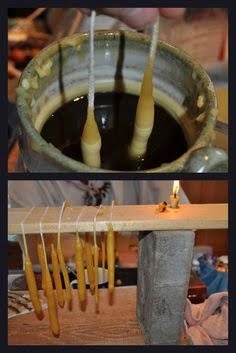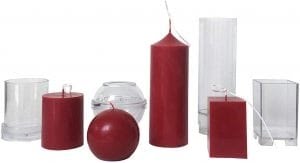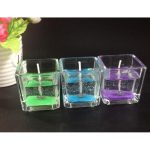Candle making has become an increasingly popular hobby and craft, allowing individuals to indulge in their creativity while also creating beautiful and aromatic products. However, one key aspect that often goes overlooked is the importance of using the right wax for candle making. Soft wax, in particular, plays a crucial role in achieving high-quality candles with exceptional burning performance.
Soft wax is a type of wax specifically formulated for candle making. It possesses unique characteristics that make it ideal for this craft. Unlike hard waxes that require additives or blending with other materials to achieve the desired consistency, soft waxes have a naturally malleable and pliable texture. This makes them easy to work with when pouring into molds or containers, allowing for smooth and even distribution.
The benefits of using soft wax are numerous, which is why it is preferred by professional candle makers worldwide. Soft waxes such as soy wax, beeswax, and palm wax offer excellent fragrance saturation capabilities, meaning they can hold fragrance oils at a higher concentration compared to other waxes.
This results in candles that emit enchanting scents throughout their entire burn time. Additionally, soft waxes have better burn quality and longer burn times than some harder waxes commonly used in candle making.
In the following sections of this article, we will delve deeper into the world of soft wax for candle making. We will discuss various types of soft waxes available on the market and provide tips on how to choose the right one based on your specific candle making goals or preferences.
Furthermore, we will explore the differences between soft wax and hard wax for candle making purposes and guide you through common troubleshooting techniques when working with soft wax. Finally, we will share some exciting DIY recipes using soft wax that you can try at home to unleash your creativity and create truly unique candles.
So if you’re ready to embark on a journey into the mesmerizing world of candle making or want to enhance your existing skills, join us as we dive into the wonderful realm of soft wax and discover its numerous benefits and possibilities.
What is Soft Wax
What is Soft Wax?
Soft wax, also known as container wax, is a type of wax specifically formulated for candle making. It is called “soft” because of its low melting point and pliable consistency at room temperature. Soft wax is typically used in container candles, where the wax is poured directly into a container or vessel.
Unique Characteristics for Candle Making
One of the key characteristics of soft wax is its ability to hold a higher fragrance load compared to other types of waxes. This means that when using soft wax, you can add a larger amount of fragrance oil without compromising the quality or performance of the candle. The high fragrance capacity makes soft wax an excellent choice for scented candles.
Another unique characteristic of soft wax is its excellent adhesion to glass or container surfaces. This ensures that the wax adheres well to the sides of the container, resulting in a smooth and even burn throughout the life of the candle. Soft wax also has a relatively low shrinkage rate, which helps prevent unsightly sinkholes or air pockets from forming as the candle cools and solidifies.
The pliable nature of soft wax allows for easy customization and creativity in candle making. It can be easily manipulated and molded into different shapes or designs for decorative purposes. Additionally, soft wax has good burn characteristics, including clean and long-lasting burns with minimal soot or smoke.
Overall, these unique characteristics make soft wax an ideal choice for both novice and professional candle makers who value versatility, fragrance longevity, excellent adhesion, and overall aesthetics in their candles.
Benefits of Using Soft Wax
Soft wax is a preferred choice among professional candle makers for several reasons. Firstly, soft wax has a lower melting point compared to other types of wax, making it easier to work with and manipulate during the candle making process. This characteristic allows for a more even and consistent distribution of fragrance oils and dyes throughout the wax, resulting in beautifully scented and colored candles.
Another advantage of using soft wax is its ability to hold a higher fragrance load. The porous nature of soft wax allows it to absorb a larger quantity of fragrance oil compared to other waxes.
This means that candles made with soft wax have a stronger scent throw when lit, filling the room with delightful aromas. Additionally, soft wax has good adherence properties, which means that fragrance oils bind well with the wax molecules and are released gradually over time as the candles burn.
Furthermore, soft wax is known for its excellent burn characteristics. It tends to produce longer-lasting candles with a smooth, clean burn. Soft waxes such as soy and beeswax have natural properties that allow them to release less soot when burned, resulting in cleaner air quality compared to candles made with other types of wax.
In summary, the benefits of using soft wax for candle making include ease of use during the manufacturing process, enhanced fragrance diffusion, longer-lasting burn times, and cleaner air while burning. These advantages make soft wax an ideal choice for professional candle makers who prioritize quality and customer satisfaction in their craft.
Types of Soft Wax Available
Soft wax is an essential component in candle making, and there are various types of soft waxes available that can be used to create beautiful and high-quality candles. Each type of wax has its unique characteristics, which can impact the overall quality, burning time, scent throw, and aesthetics of the finished candles. Here are some common types of soft waxes used in candle making:
- Soy Wax: Soy wax is a popular choice for many candle makers due to its natural and eco-friendly properties. Made from soybean oil, this wax has a smooth texture and excellent scent throw capabilities. Soy wax also has a long burning time and allows for vibrant color retention, making it ideal for creating scented or colored candles.
- Beeswax: Beeswax is another natural option for soft wax in candle making. It is produced by bees and is known for its pleasant honey-like fragrance. Beeswax has a high melting point, which makes it great for creating dripless candles that burn slowly with minimal smoke or soot. Additionally, beeswax gives candles a warm glow and produces negative ions that can purify the air.
- Palm Wax: Palm wax is derived from the palm tree’s oil palm fruit crop and offers unique characteristics for candle making. This wax has a distinctive feathering or crystalline effect when it cools down, creating beautiful patterns on the surface of the candle. Palm wax also provides exceptional scent throw and burning performance.
When choosing the right soft wax for your candle making project, consider factors such as your desired candle qualities (e.g., scent throw, burn time), environmental impact preference (e.g., natural or synthetic), budget constraints, and personal preferences regarding texture, appearance, and sustainability.
It’s worth noting that soft waxes like soy wax, beeswax, and palm wax are just a few examples of what’s available in the market. As you dive deeper into the world of candle making, you may encounter other types of soft waxes made from various natural or synthetic sources. Researching and experimenting with different waxes can help you discover new possibilities and enhance your creativity in candle making.
How to Choose the Right Soft Wax
Choosing the right soft wax is crucial for successful candle making. With a wide variety of options available, it can be overwhelming to determine which soft wax is best suited for your specific candle making goals or preferences. Here are some tips and guidelines to help you make an informed decision:
- Consider the melting point: The melting point of the soft wax plays a significant role in determining the burn time and scent throw of your candles. Generally, soy wax has a lower melting point compared to other waxes like beeswax or palm wax. If you prefer longer burn times and stronger scent throw, consider using a soft wax with a higher melting point.
- Assess the fragrance compatibility: Different types of soft wax may have varying levels of compatibility with fragrances or essential oils. Some waxes may hold scents better than others, resulting in stronger or more long-lasting aromas when burned. It is advisable to conduct small test batches using different waxes and fragrances to determine which combination works best for you.
- Check for natural or synthetic ingredients: Soft waxes can be made from natural sources like soybean oil (soy wax) or beeswax, as well as synthetic materials such as paraffin wax. Natural waxes are often favored by those seeking an eco-friendly option, while synthetic waxes may offer specific characteristics like even burning or easier color manipulation.
- Consider color possibilities: If you prefer vibrant and intense colors in your candles, consider using soft waxes that allow for easy pigment incorporation and offer excellent color retention when cooled. Some natural waxes like soy wax may require additional additives or special techniques to achieve certain colors.
- Evaluate ease of use: Different soft waxes may have varying degrees of ease when it comes to handling and pouring into molds. Some waxes may require preheating or double boiler methods for melting, while others can be melted directly in a microwave. Consider your comfort level and the equipment you have available when choosing a soft wax.
By carefully considering these factors, you can choose the best soft wax for your specific candle making goals or preferences. Remember, experimentation is key to finding the perfect balance of qualities that align with your desired outcome. Take the time to test different waxes and formulations to create beautiful and fragrant candles that reflect your style and creativity.
| Tips for Choosing Soft Wax: |
|---|
| Consider the melting point |
| Assess fragrance compatibility |
| Check for natural or synthetic ingredients |
| Consider color possibilities |
| Evaluate ease of use |
Soft Wax vs. Hard Wax
Soft wax and hard wax are two commonly used types of waxes in candle making. While both can be used to create beautiful candles, they have distinct characteristics that set them apart. Understanding the differences between soft wax and hard wax is important for candle makers to choose the right type of wax for their specific needs and preferences.
Soft Wax
Soft waxes are known for their pliability and ability to hold fragrance well. They have a lower melting point compared to hard waxes, which makes them easier to work with during the candle making process. Soft waxes often include ingredients such as soybean oil or palm oil, which contribute to their smooth texture and excellent scent throw.
When using soft wax, it is important to note that it can be more susceptible to melting in warmer temperatures. This means that candles made with soft wax may have a lower melt point, making them more prone to melting quickly when lit. However, this also means that they produce a stronger fragrance release when burned.
Hard Wax
Hard waxes have a higher melting point compared to soft waxes, resulting in candles that burn at a higher temperature without sagging or bending. They are typically made from ingredients such as paraffin wax or beeswax, giving them a rigid structure that holds its shape well.
One advantage of using hard wax is its ability to produce long-lasting candles with slower burn times. This makes them ideal for creating decorative or pillar candles that can withstand longer burning periods without losing their form. Additionally, hard wax tends to have a glossy finish that gives candles a polished look.
However, it should be noted that hard waxes may require additives or stabilizers to improve their scent throw and prevent cracking. They can also be more challenging for beginners to work with, as they require higher melting temperatures and can be less forgiving if mistakes are made during the candle making process.
Soft Wax Troubleshooting
Working with soft wax can sometimes present challenges for candle makers. However, by understanding the common issues that may arise and having solutions at hand, these challenges can be easily overcome. In this section, we will address some of the most common troubleshooting situations when working with soft wax and provide helpful tips to ensure successful candle making.
1. Sinking or Uneven Tops: One common issue when using soft wax is the tendency for candles to develop sinkholes or have uneven tops after cooling.
To prevent this, try pouring your wax at a slightly higher temperature than usual and allow it to cool slowly in a draft-free area. You can also use a heat gun or hairdryer on low setting to gently melt the surface of the candle after it has cooled down to create a smooth finish.
2. Tunneling: Tunneling occurs when a candle burns down leaving excessive amounts of unburned wax along the edges of the container. To avoid this issue, make sure that you have chosen an appropriate wick size for your chosen container size and type of soft wax. Additionally, make sure to trim the wick before each use to prevent soot buildup and ensure an even burn.
3. Fragrance Throw Issues: Sometimes, candles made with soft wax may not have a strong enough scent throw when lit. This could be due to using too little fragrance oil or not incorporating it thoroughly into the melted wax before pouring.
To solve this problem, carefully follow the recommended fragrance load guidelines provided by your supplier based on the type of soft wax you are using. Be sure to mix your fragrance oil into the melted wax at an appropriate temperature (usually around 180-185°F) for optimum distribution.
| Issue | Solution |
|---|---|
| Sinking or Uneven Tops | – Pour wax at a slightly higher temperature – Allow wax to cool slowly and undisturbed. – Use a heat gun or hairdryer to melt the surface |
| Tunneling | – Choose an appropriate wick size for container – Trim wick before each use. – Burn candle long enough for a full melt pool to form |
| Fragrance Throw Issues | – Follow recommended fragrance load guidelines – Mix fragrance oil thoroughly into melted wax at the correct temperature |
By addressing these common troubleshooting issues, you can confidently work with soft wax and create beautiful, high-quality candles. Remember to always test new techniques and troubleshoot as needed based on the unique characteristics of the specific soft wax you are using. With practice and experience, you will be able to overcome any challenges that may arise during your candle making journey.
Soft Wax DIY Recipes
Candle making is not just a hobby; it is an art that allows individuals to create beautiful and personalized creations. One of the main components in candle making is the wax used. Soft wax, in particular, offers numerous benefits that make it a popular choice among professional candle makers. In this section, we will explore some exciting and easy-to-follow DIY recipes using soft wax.
1. Scented Candles: Adding fragrance to your candles can enhance the overall experience and create a pleasant ambiance. To make scented candles using soft wax, you will need to first melt the wax and add your desired fragrance oil or essential oil. Stir the mixture well to ensure the scent is evenly distributed throughout the melted wax. Then, pour the mixture into your chosen candle molds or containers and let it cool and solidify.
2. Colored Candles: Colorful candles can bring joy and vibrancy to any space. To make colored candles using soft wax, you will need to choose candle dye chips or liquid candle dye in your preferred colors.
Melt the soft wax as usual and then add a small amount of dye to achieve your desired shade. Stir well until the color is evenly blended throughout the melted wax. Pour the mixture into molds or containers and allow it to cool completely before removing them from their molds.
3. Decorative Candles: Creating decorative candles adds an artistic element to your candle making endeavors. There are various methods you can use for decorating soft wax candles, such as embedding dried flowers or herbs into the surface of the candle as it cools or pouring different layers of differently colored waxes for a unique visual effect. The key is to let your creativity flow and experiment with different techniques until you achieve your desired look.
By following these simple DIY recipes using soft wax, candle makers can unleash their creativity and create personalized candles that suit their preferences or occasions. Whether you are making scented candles to create a relaxing atmosphere, colored candles to brighten up a space, or decorative candles as gifts or home decor, soft wax provides the versatility and ease of use that allows for endless possibilities in candle making.
So gather your supplies and let your imagination run wild as you embark on this enjoyable and rewarding craft.
Conclusion
In conclusion, soft wax is a fantastic option for candle making due to its numerous benefits and versatility. Its unique characteristics make it the preferred choice for professional candle makers who value quality and craftsmanship. Soft wax, such as soy wax, beeswax, and palm wax, provides a superior burn time, clean-burning properties, and the ability to hold fragrance and color effectively.
Choosing the right soft wax for your candle making projects is essential. Consider your specific goals and preferences when selecting a type of soft wax. Whether you want a longer burn time or are looking for eco-friendly options, there is a soft wax out there that will meet your needs.
While soft wax has many advantages over hard wax, it’s important to note that certain challenges may arise when working with it. However, with some troubleshooting tips and solutions, you can easily overcome these issues and create stunning candles every time.
Finally, I encourage readers to explore their creativity and indulge in the relaxing craft of candle making. Soft wax provides endless possibilities for creating beautiful scented candles, colored candles, and decorative candles. With the right materials and techniques at hand, you can transform your home into a cozy oasis filled with the warm glow of your handmade creations.
So why not take some time to experiment with different types of soft wax? Discover the joy of crafting unique candles that reflect your personal style while enjoying the therapeutic process of candle making. It’s an art form that allows you to express yourself while bringing comfort and ambiance into any space. Don’t wait any longer – dive into the world of soft wax candle making today.

Welcome to my candle making blog! In this blog, I will be sharing my tips and tricks for making candles. I will also be sharing some of my favorite recipes.

